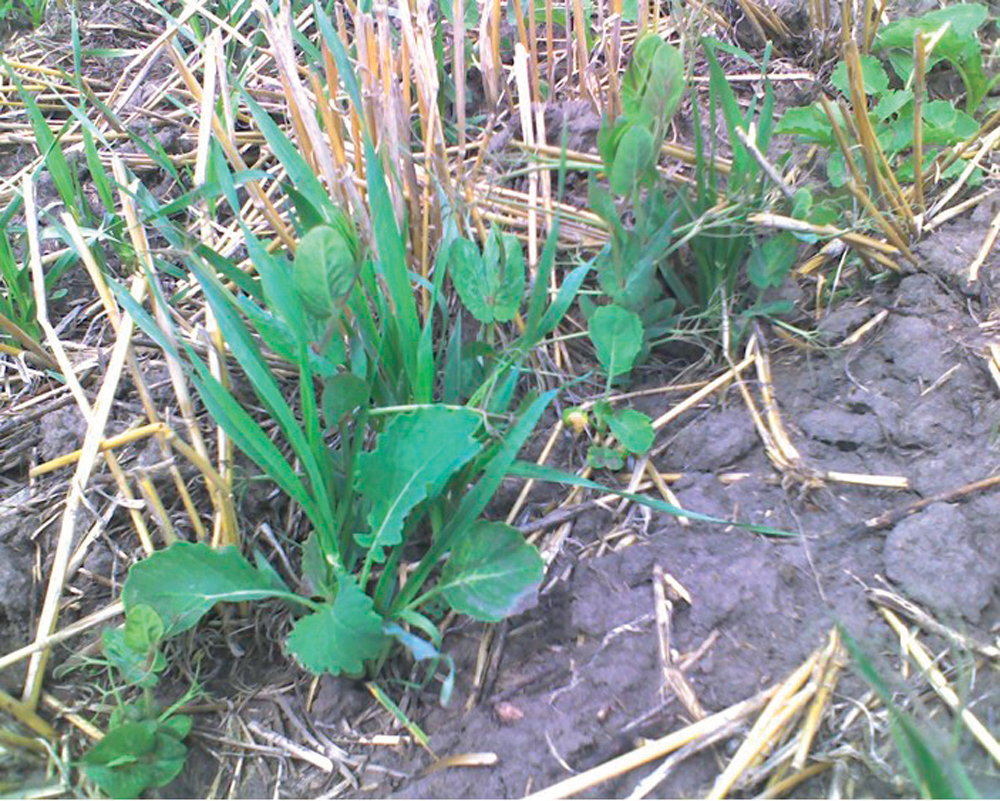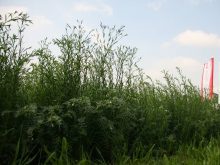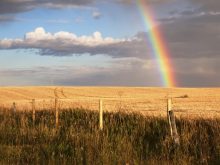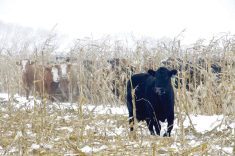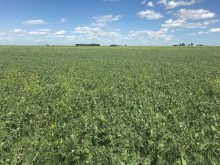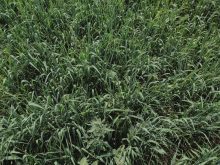It’s interesting how many farmers adopting regenerative agricultural practices, like intercropping and cover crops, are either downsizing their operations, thinking about downsizing or have taken the pressure off in terms of looking for more high-priced land to expand (either to buy or rent).
The three producers on a panel at an Intercropping Workshop in Brandon, Manitoba, last November each talked about the fact that they had reduced input costs, achieved more yield per acre and were better managing risk by adopting intercropping and other regenerative practices on their farms.
Read Also

Claas brings 1000 Series SP forage harvesters to Canada
In mid-August, Claas unveiled its new line of Jaguar forage harvesters at an event in Visalia, California, deep in the heart of that state’s dairy region.
Three different operations
Each of the panelists have very different operations. Joe Wecker farms at Sedley, 35 minutes southeast of Regina, growing both organic and “near organic” crops. He has recently downsized his 11,000-acre farm to 9,000 acres. “Since we went more regenerative we spend a lot less money on inputs, we’re out in the fields less, and we’ve got more yield per acre, so we asked ourselves, ‘Why are we farming so much land? Can we do a better job with less land?’” says Wecker. “The answer for us was yes. We dropped the land that was furthest away. I probably won’t sell more land, but right now I think it’s a good size for us to handle. You can do a lot of good things on the one side, and you screw up things on the other end just because you farm too much.”
Nick Cowan, together with his Dad and brother, manages 10,000 grain acres, 600 cows and a 1,500-head feedlot near Hartney, Manitoba. They aren’t looking to expand acres any time soon. “Land prices are ridiculous in our area,” says Cowan. “At our size we have enough work to do. We spend more time on what we have and take more profit on every acre. Expanding for us would be just taking time away and stepping away from all the acres that we do, so size really doesn’t matter at this point.”
Patty and Andrew Harris operate Harris Ridge farm, a 1,400-acre operation near Stonewall, Manitoba, in collaboration with Andrew’s parents. “Every farm is trying to be as efficient as possible,” says Andrew. “It doesn’t matter if you are the biggest shark in the ocean or the smallest, you’ve got to be efficient. We are not thinking of downsizing; we are thinking of bringing more people back and having more people involved because there is a lot to do.”
Intercropping for soil health
Intercropping basically involves seeding two or more crops together either side by side or in the same seed row. The science behind intercropping suggests that crops grown together have a synergistic relationship that encourages the exchange of nutrients between plants, takes advantage of spatial diversity such as different rooting depths and helps increase yields and prevent disease.
So why did these producers first adopt intercropping and how has it helped them to be more efficient and save costs?
Wecker grows 6,000 acres of organic and 3,000 acres of biological crops on heavy clay soils that usually receive around 15 inches of rain annually, but have been uncharacteristically dry the past couple of years. He grows 10 different commercial crops, and also does cover crops, intercropping and green manure.
Wecker has an on-farm, seed cleaning plant because he prefers to grow his own seed for his cover crops and intercrops. He grows different combinations of intercrops including peas and oats, peas and barley, lentil and oats, lentil and mustard, chickpea and flax, cereal and clover.
Wecker says the reason that he does intercropping on his farm is to increase biodiversity for better soil and plant health. “If you have biodiversity on top of the ground, you’re going to see the same biodiversity below ground with roots, microbes and life altogether. You will see an increase in beneficial insects, and will build mycorrhiza to improve nutrient exchange. It’s synergistic growth; it’s not a competition so we have to make sure we put enough plants there so they evolve together as best they can.”
Cowan began growing cover crops 10 to 12 years ago but six years ago he got serious about cover crops and intercropping, adding canola and peas and hairy vetch and rye. “Where intercropping fits well for us is as a way to get our cover crops going,” says Cowan. As an example, this year he planted sunflowers and buckwheat. “We are going to combine the cash crop and just let the intercrop grow as cover crop. We will probably turn the cows on that as well.”
Patty and Andrew Harris have been working over the past five years to find innovative ways to transition their farm from conventional to organic grain production, with specialization in ancient grains like spelt, einkorn and amaranth. They also raise sheep, chickens and laying hens, using livestock to graze their green manures and cover crops. “For the past year the idea of putting soil health as a cornerstone of our operation through regenerative agriculture practices has really inspired us,” says Patty.
Andrew says the main focus has been on planting multiple crops simultaneously to take advantage of symbiotic relationships between the species. They have taken a trial and error approach, trying a few intercrops this past year including wheat and flax, flax and soybeans, and flax and lentils. Despite mixed results, says Andrew, they feel that any issues have been small growing pains rather than systematic and the results have been positive enough to make them excited about the future of intercropping on their farm. Next year they plan to try oat, faba beans and canola intercrop on a piece of conventional no-till land. They want to try seeding winter wheat after a second cut of hay to increase the yield in the next year’s first cut of hay.
They are also keen to try winter wheat and soybean relay cropping (planting the winter wheat into the soybean before harvest) and buckwheat and soybean intercropping. “We are passionate about treating our operation as a closed loop, holistic and biodiverse ecosystem with healthy interactions between the soil, microbiology, plants and livestock,” says Andrew.
Intercropping for resiliency
Intercrops also help Wecker to better manage through a lack of moisture that’s hit his area recently. Two years ago he grew a pea and lentil intercrop on ground that had received no rain over the past two years. “Every year I see that in certain parts of the field one crop is better than the other, and going back over the last two years I probably would have had to reseed 3,000 acres if I wouldn’t have had an intercrop there,” he said. “But I didn’t have to reseed it; it just grew and I always have a crop I can combine. When crop insurance says we won’t insure intercrops, you should actually get a discount on growing intercrops because the risk is spread out.”


